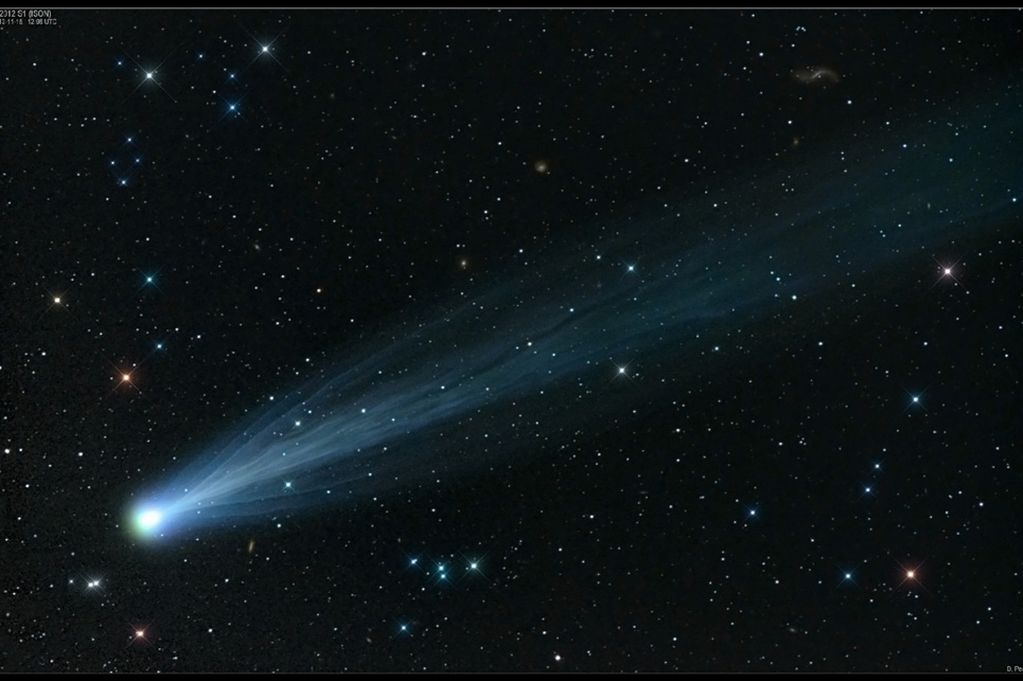
Comment:
Editors' Note
This article builds on an excerpt from an upcoming book, to be published by Red Pill Press, which draws on the 'Electric Universe' concept, information theory, astronomy, paleogeology - and much more - to present an expanded cosmology linking so-called 'climate change' and 'Earth changes' with mankind's role in the greater cosmic environment.
Written by Pierre Lescaudron, editor and researcher for SOTT.net, in the following article he provides an explanation for the "weird" and "unexpected" behaviour of Comet ISON to date, particularly regarding its unexpected survival as it went around the Sun on November 28th, 2013.
Comets or Asteroids?
As depicted in the above illustration, and routinely argued by mainstream science, comets are "chunks of ice and rock", a.k.a. "dirty snowballs". This belief, however, is incompatible with the actual data. For instance, in 2011 Comet Lovejoy plunged into the Sun's atmosphere and emerged on the other side after an hour-long journey through the sun's corona. Its size and brightness didn't seem to have diminished.1 Here are some (pretty typical) comments from observers of this event:
This morning, an armada of spacecraft witnessed something that many experts thought impossible. Comet Lovejoy flew through the hot atmosphere of the sun and emerged intact. "It's absolutely astounding," says Karl Battams of the Naval Research Lab in Washington DC. "I did not think the comet's icy core was big enough to survive plunging through the several million degree solar corona for close to an hour, but Comet Lovejoy is still with us." 2But if the temperature of the Sun's corona is several million degrees3, and if Comet Lovejoy is no more than a chunk of ice estimated to be just a few hundred meters in diameter,4 how was it possible that it wasn't vaporized?
In the same vein, in 2004 the NASA space probe Stardust flew about 300 km from Comet Wild 2 and shot detailed pictures of it.5 According to the textbooks, those pictures of the comet should have revealed a mass of "dirty snow". Here's what the Stardust program director said when the images came back:
"We thought Comet Wild 2 would be like a dirty, black, fluffy snowball," said Stardust Principal Investigator Dr. Donald Brownlee of the University of Washington, Seattle. "Instead, it was mind-boggling to see the diverse landscape in the first pictures from Stardust, including spires, pits and craters, which must be supported by a cohesive surface."6So, comets are not "dirty snowballs" after all. From all available data, they are substantially chunks of rock, just like asteroids. In fact, it was acknowledged recently that the difference between 'comets' and 'asteroids' might not be so clear-cut, although efforts to fill in gaps include suggestions that asteroids are comets that retire to the asteroid belt as "extinct rocky comets", and from where they can be "reignited".7 The difference, in the end, is not so much due to chemical or structural composition, i.e. dirty, fluffy, icy comets vs. rocky asteroids. Rather, as has been long suggested by plasma theorists, what differentiates 'comets' from asteroids' is their electrical activity.
When the electric potential difference between an asteroid and the surrounding plasma is not too high, the asteroid exhibits a dark discharge mode8 or no discharge at all. But when the potential difference is high enough, the comet switches to a glowing discharge mode.9 At this point the asteroid is a comet. From this perspective, a comet is simply a glowing asteroid and an asteroid is a non-glowing comet. Thus the very same body can, successively, be a comet, then an asteroid, then a comet, etc., depending on variation in the ambient electric field it is subjected to.10
Note that a comet can also exhibit the third plasma discharge mode, namely lightning or 'arc mode discharge', which is probably what happened when Comet Shoemaker-Levy entered the vicinity of Jupiter in July 1994:
Astronomers expected the encounter to be a trivial event. "You won't see anything. The comet crash will probably amount to nothing more than a bunch of pebbles falling into an ocean 500 million miles from Earth." Then came the encounter and an about face. As reported by Sky & Telescope, "When Fragment 'A' hit the giant planet, it threw up a fireball so unexpectedly bright that it seemed to knock the world's astronomical community off its feet ..."The last two categories in the above-mentioned classification are "meteors" and "meteorites". Meteors are simply asteroids or asteroid fragments that reach the Earth's atmosphere, and meteorites are the chunks of meteors that manage to reach the Earth's surface. So throughout its life, an asteroid can be a comet (when it is in glowing discharge mode), a meteor (when it enters the atmosphere) and finally a meteorite (if it reaches a planet's surface).
The Hubble Space Telescope (HST) detected a flare-up of fragment "G" of Shoemaker-Levy long before impact at a distance of 2.3 million miles from Jupiter. For the electrical theorists, this flash would occur as the fragment crossed Jupiter's plasma sheath, or magnetosphere boundary.11
Now, Comet ISON is providing us with real time observations which, when compared to mainstream expectations of how they believe comets ought to behave, brilliantly revealed many inconsistencies:
1.) Expected brightness versus Observed brightness
ISON was supposed to be the "Comet of the Century" because of its predicted brightness. It was going to be even brighter than the full moon, according to some popular sources.12 However, ISON didn't reach such levels of brightness. The brightness of the full moon is magnitude -1313 and ISON during its journey towards the Sun exhibited a brightness between 1914, when it became observable by amateur telescopes, and -215 on November 28th, when it passed Delta Scorpii16.
Perhaps magnitude forecasts were overestimated because mainstream cosmology considers comets to be "dirty snowballs"? An understanding of the electrical nature of celestial bodies and their interactions tells us that the brightness of comets should be proportional to the electrical field they cross. One possible reason why ISON was dimmer than expected is related to weak solar activity, which reduces the heliospheric electric field, also known as the heliospheric current sheet.17 As you may have noticed, we're currently going through an unusually quiet solar maximum.18
2.) Expected outburst versus Observed outburst
En-route towards the Sun, ISON experienced several unexpected outbursts when its brightness suddenly increased dramatically. For example, between November 12th and November 14th, ISON's brightness jumped from magnitude 8 to 4. This means that in just 72 hours, Comet ISON increased nearly 16-fold in brightness.19, 20

If we take into account the electrical interaction of celestial bodies, ISON's outburst makes sense because a few days before this event, two class-X solar flares occurred: an X1.1 flare on November 8th and an X1.1 flare on November 10th. 24
Solar flares are massive discharges of solar particles which have an overall positive charge. When these powerful solar winds reached ISON a few days after their ejection, they subjected this negatively charged body (because it comes from the negatively charged end of the solar system) to a positively charged environment. This electric difference leads to:
a.) A massive discharge between the comet and its surrounding space, resulting in the comet glowing more intensely (such glow being the second plasma discharge mode)
b.) The comet's electric potential increasing, bringing it closer to the electric potential of the surrounding space. That's one of the two factors explaining ISON's survival to make the rendez-vous for a solar fly-by (see point 3 below).
Comet ISON's orbit, depicted above, is similar to that of most comets and follows a highly elliptical orbit.25 Usually aphelion (the furthest point it reaches from the Sun) lies beyond the region of the outer planets, while perihelion can be less than one astronomical unit (Sun-Earth distance).26 ISON's aphelion is unknown, although its very elongated orbit suggests a remote aphelion outside our solar system.
Because of their highly eccentric orbits, the trajectory followed by most comets is almost perpendicular to the Sun's electric field. This means that the surrounding electric potential is rapidly changing along the comet's journey across the solar system.27 This subjects the comet to increasing electric stress brought on by increasing electric potential difference between the comet and its surrounding space. This disbalance in electric potential triggers massive solar discharges and comet outbursts, as illustrated below.
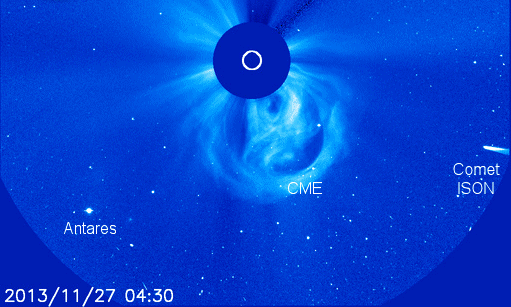
3.) Predicted perihelion events versus Observed perihelion events
Officially, perihelion is a dangerous time/location for a comet, especially for Comet ISON which is supposed to be a one-mile diameter "dirty snowball" passing less than 1 million miles away from the Sun's center, where temperatures reach about 2,700°C29, more than twice the temperature necessary to melt iron.30
Recalling Comet Lovejoy's 'mission impossible' when it passed through the Sun's millions°C corona without sustaining much damage, NASA scientists were more cautious this time and wondered if ISON might actually survive its epic solar fly-by.31
When ISON entered the solar vicinity and disappeared from observation for several minutes, commentators announced the death of ISON.32 Its death would have been a relief for them, confirmation of their "dirty snowball" theory.
But Thanksgiving 2013 had a surprise in store for them: after a period of unbearable suspense, ISON reappeared on the other side of the Sun!
The ISON fly-by revealed two interesting pieces of data:
a.) It didn't disintegrate.
b.) It became dimmer as it approached the Sun.33
These two points are totally contrary to the dirty snowball model. When an 'icy comet' gets closer to the Sun, it should become brighter (more evaporation, more gas jets) and it should eventually melt away. Neither happened, which makes sense in an electric universe.
As a matter of fact, during its solar fly-by a comet is subjected to a rather constant electric field. In the drawing below, we can see that ISON passed through different electric field lines (illustrated by the concentric circles +1, +2, ...) during its approach. As described previously, this electric potential difference between the comet and its surrounding space triggered solar flares, intense glowing and raised ISON's electric potential.
When ISON entered the solar vicinity (demarcated by the +4 region in the drawing), its potential was already quite positive AND it entered a region of rather constant electric potential.
Unlike its crossing of the electric field lines34 +1, +2 and +3, which it crossed almost perpendicularly, by the time it reached the +4 field line, its trajectory was almost parallel to it, meaning that the surrounding electric potential was almost constant.
As a result, ISON 'had a breather' and was subjected to reduced electric stress. Less electric difference between the comet and the surrounding space therefore produced less discharge, less glowing, and less chance that the comet would disintegrate.
Karl Battams35, who had announced the death of Ison36, made the following statement after it re-emerged from behind the Sun:
Battams added that ISON has been a very unpredictable comet, flaring up when people expected it would fade, and vice versa.When observations keep providing data that are opposite to what the conventional model predicts, the logical conclusion is that the model is flawed! Of course, it could be that the scientific agenda here is not to find truth, but rather to maintain the dominant dogma, in which case one would naturally blame the observed phenomenon by calling it "weird", "strange", and "unpredictable".
"ISON is just weird. It has behaved unpredictably at times. When it's done something strange, we spent some time scratching our heads, figuring out what is going on, and when we think we know what it's doing ... it then goes and does something different."37
Notes
- If you go this NASA page, you'll see footage of Comet Lovejoy plunging into the Sun's atmosphere and, one hour later, re-emerging on the other side.
- science.nasa.gov
- The corona is the plasma atmosphere that surrounds the Sun. Its temperature is estimated between 1 and 5 million°C. See: Gerald North, Astronomy in Depth, p 125
- nasa.gov
- www2.le.ac.uk
- jpl.nasa.gov
- sciencedaily.com
- See Chapter 5 in upcoming book: "Discharge modes".
- An intense circulation of ions and electrons occurs between an asteroid and the surrounding space. The energy provided by this intense transfer "excites" electrons, which generate photons, hence the asteroid's glow. See: J. Meichsner, Nonthermal Plasma Chemistry and Physics, p.117
- Thornhill W. & Talbott D., The Electric Universe, p. 95-99
- thunderbolts.info
- Peter Grego. "New comet might blaze brighter than the full Moon". Astronomy Now. 25 September 2012
- The higher the magnitude, the lower the brightness. Typically the Sun's brightness is about -27, the full moon is about -13, the brightest modern comet, Ikeya-Seki (1965) was - 10, the brightness of Venus is -5. Objects with a magnitude up to 6.5 are visible to the naked eyes. Objects with a magnitude higher than 6.5 are not visible to the naked eye.
- Michael Bakich, "Comet ISON will light up the sky". Astronomy. 25 September 2012
- Karl Battams, "Very quick update". CIOC. 27 November 2013
- Star located in the constellation Scorpius.
- en.wikipedia.org
- sott.net
- The magnitude scale is logarithmic. For example, increasing magnitude from -9 to -6 (+3) means doubling the brightness.
- huffingtonpost.com
- astronomia.udea.edu.co
- brucegary.net
- spaceref.com
- http://mysolaralerts.blogspot.fr/p/solar-flare-list.html
- windows2universe.org
- In the case of ISON, perihelion is about 1 million miles from the center of the Sun, i.e. 0.012 A.U. MPEC 2013-W16 : COMET C/2012 S1 (ISON). IAU Minor Planet Center. 26 November 2013. See: X1.1 flare on Nov. 8, X1.1 flare on Nov. 10
- Thornhill W. & Talbott D., The Electric Universe, p. 90-95
- Also known as the 'main asteroid belt'. Its total mass is supposed to be 4% of our Moon. Krasinsky, G. A.; Pitjeva, E. V.; Vasilyev, M. V.; Yagudina, and E. I. (July 2002). "Hidden Mass in the Asteroid Belt". Icarus 158 (1): 98 - 105.
- skyandtelescope.com
- 4,900° Farenheit. For reference, iron's melting point is 1,200° Celsius, i.e. 2,100° Farenheit. Source
- cbc.ca
- universetoday.com
- "You would expect it to get brighter and brighter but unfortunately it got dimmer and dimmer as it got close to the sun," said Dr Pesnell, project scientist with NASA's Solar Dynamics Observatory (SDO). Source
- An electric field line defines locations where the electric potential is the same. It's similar to the altitude lines on a geographic map where every point of the line is at the same altitude.
- Naval Research Laboratory astrophysicist who operates the Sungrazing Comets Project and participated in a NASA 'Google+ Hangout' on ISON.
- universetoday.com
- Ibid.
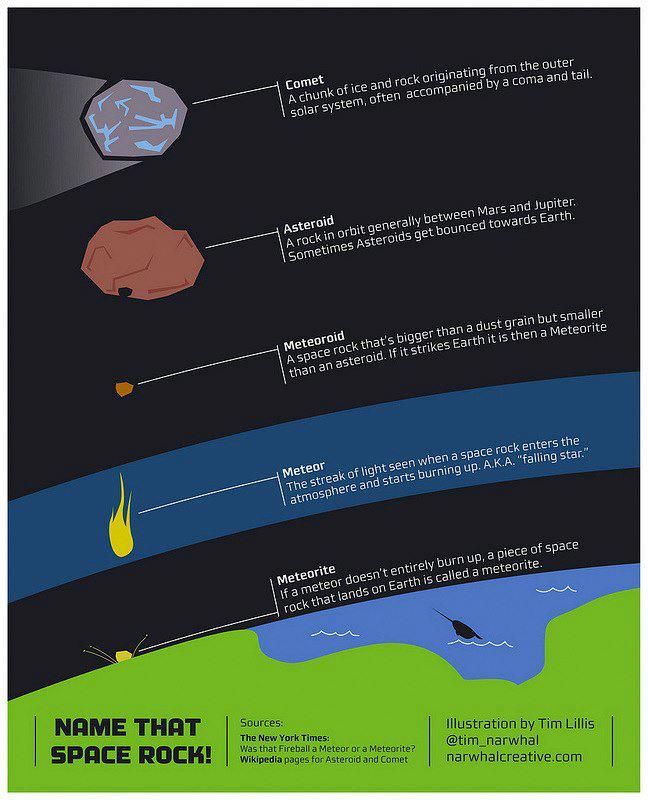
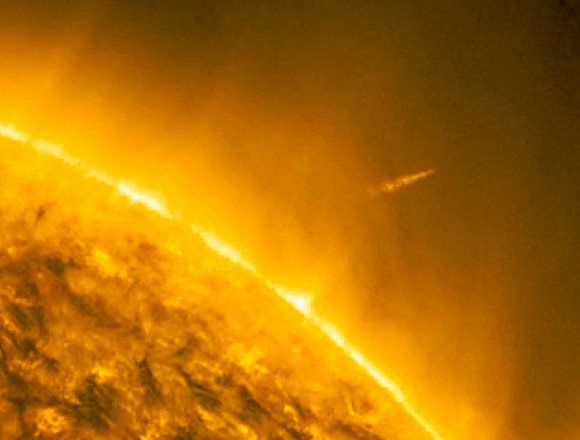
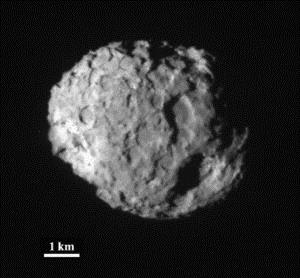
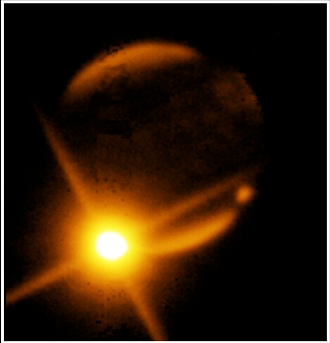
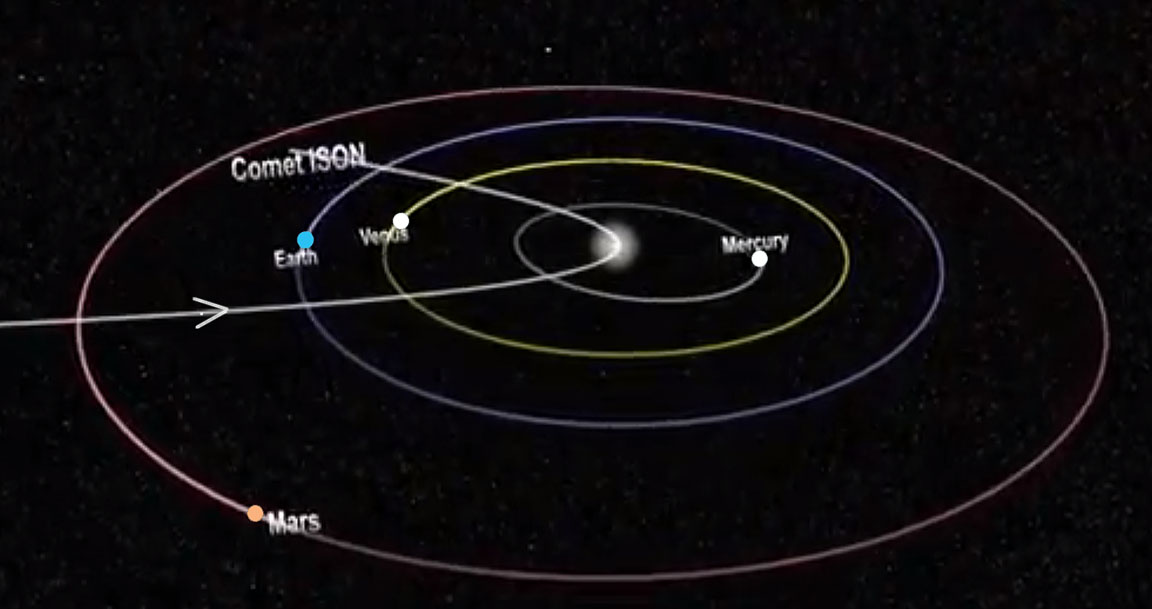
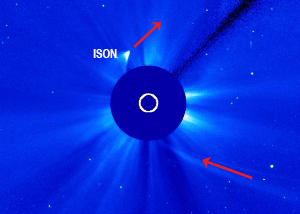
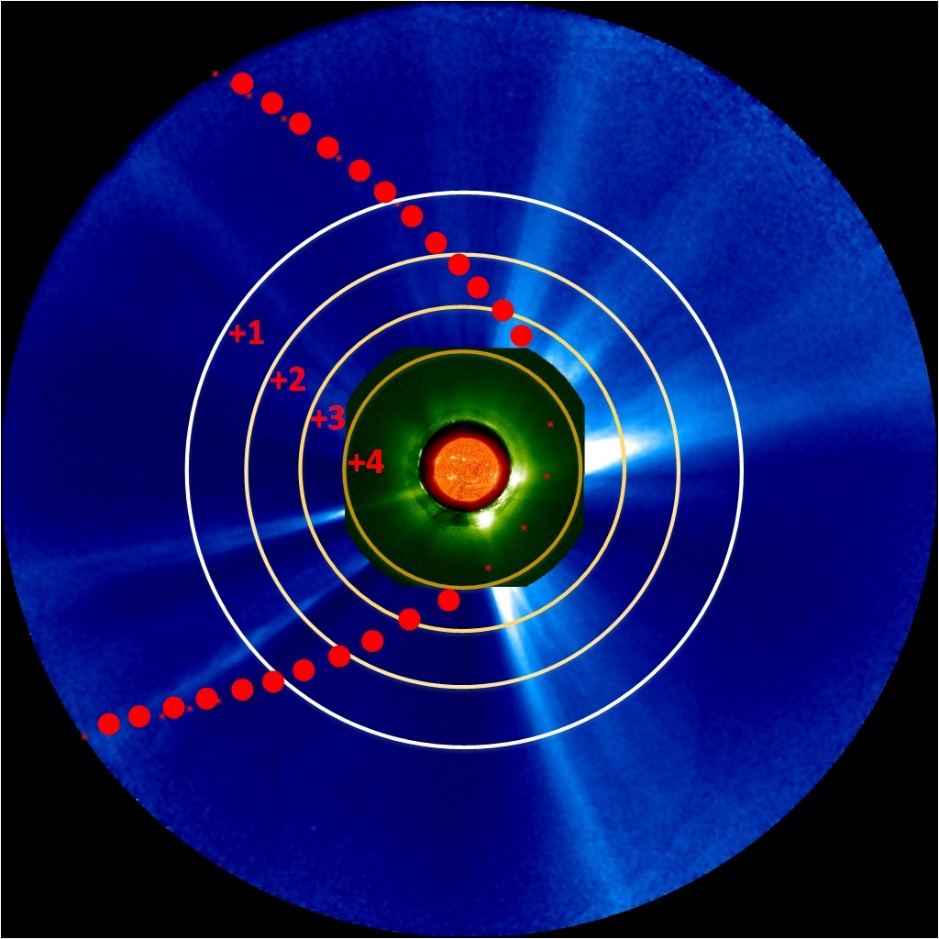



Nice, nice. Thanks very much for an up-to-date article. I miss more of these. There is a continuous stream of original writings on SOTT about politics, society and Earth changes, quiet less about health but this was needed for the sake of balance on the cosmic side of things.
Easy to understand and enjoyable. And great news about the upcoming book!